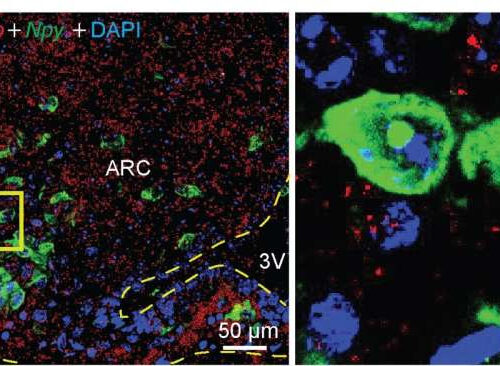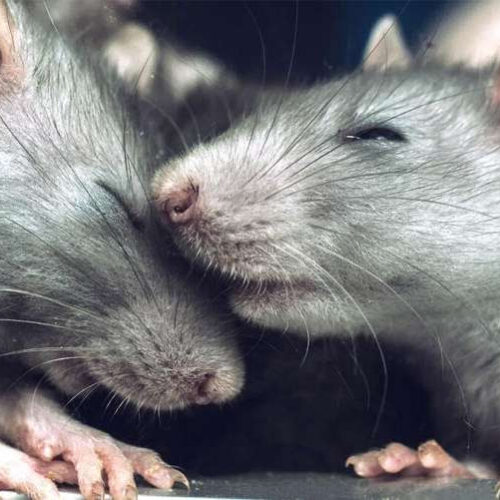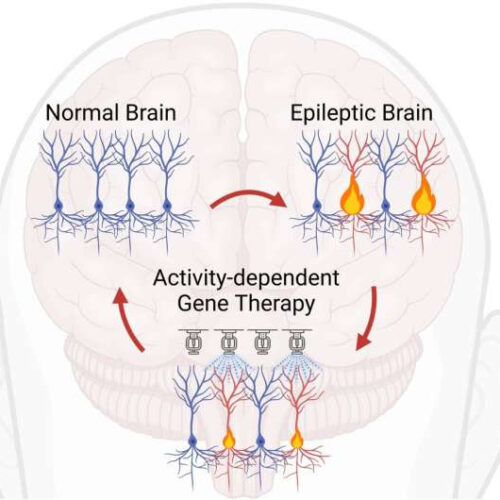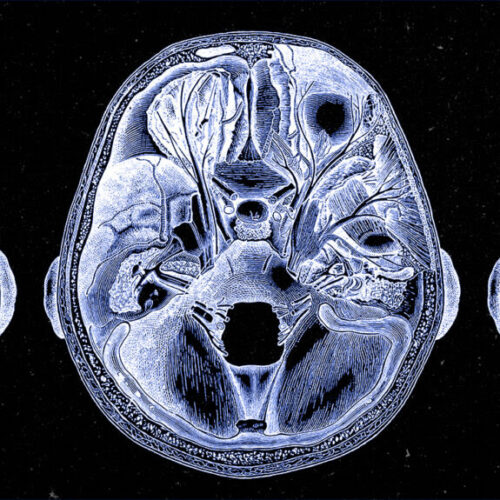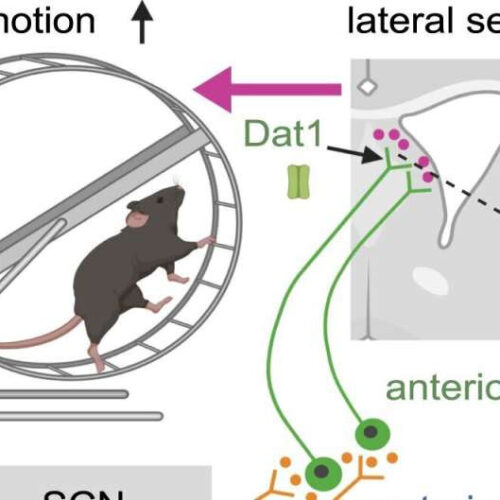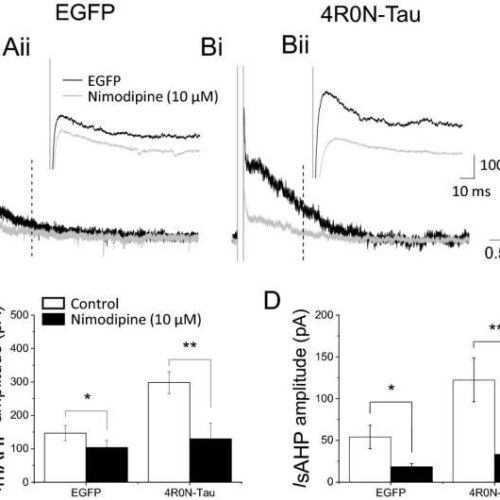by University of Queensland Credit: The EMBO Journal (2023). DOI: 10.15252/embj.2022112095 Researchers from The University of Queensland have determined how Botox—a drug made from a deadly biological substance—enters brain cells. Professor Frederic Meunier and Dr. Merja Joensuu at UQ’s Queensland Brain Institute have discovered the specific molecular mechanism by which the highly deadly Botulinum neurotoxin type-A, more widely...
Tag: <span>brain cells</span>
Researchers pinpoint brain cells that drive appetite in obesity
by Garvan Institute of Medical Research Researchers have pinpointed a subset of neurons (green) in the arcuate nucleus of the hypothalamus that drive appetite under obesity. Credit: Dr Yue Qi A team at the Garvan Institute of Medical Research has discovered a group of brain cells that boosts appetite when there is a prolonged surplus of energy in the body,...
A signaling pathway within brain cells that regulates how long and how deeply we sleep
by University of Tsukuba Credit: Ukki Studio/Shutterstock A good night’s sleep can work wonders for both mind and body. But what is it that determines how much we need to sleep, and what can cause us to sleep more deeply? In a new study, researchers from the University of Tsukuba have now provided some answers,...
Gene therapy targeting overactive brain cells could treat neurological disorders
by University College London Schematic of the Activity-dependent Gene Therapy. Credit: Gabriele Lignani A new treatment for neurological and psychiatric diseases, that works by reducing the excitability of overactive brain cells, has been developed by UCL researchers. Many brain diseases, such as epilepsy, are caused by excessive activity of a small number of brain cells. These...
Scientists find the brain cells that drive us to eat fat, sugar
Specific neurons in the brain may drive our overeating behavior. mikroman6/Getty Images Researchers investigated the neural activity underlying the consumption of fatty and sugary foods and activity levels. They looked at the effect of a specific cluster of neurons in the brain’s emotional center—the amygdala— on energy consumption and energy expenditure. They tested this by turning...
Huge unveiling of schizophrenia brain cells show new treatment targets
UNIVERSITY OF COPENHAGEN – THE FACULTY OF HEALTH AND MEDICAL SCIENCES If you thought it was easy to analyse brain cells, think again. When you take a brain tissue sample, all that your analysis would normally show you is an average for all the cell types present. And since there is a whole lot of...
Brain cells identified for regulation of sleep-wake rhythm
by Johannes Angerer, Medical University of Vienna Illustration summarizing and contextualizing the experimental findings. (Biorender assisted with the graphical design.). Credit: Nature Communications (2022). DOI: 10.1038/s41467-022-33584-3 A research team of the Center for Brain Research at the Medical University of Vienna has identified a specific cell group in the brain responsible for shifts in the sleep-wake rhythm...
Ratio shift of protein in brain cells causes changes underlying early cognitive decline
by University of Bristol Enhanced Ca2+ entry through L-type channels results in augmentation of currents underlying medium and slow AHPs in hippocampal CA1 pyramidal neurons expressing 4R0N-tau. (Ai,Bi) Membrane current evoked following a depolarizing voltage step to + 10 mV (100 ms duration) in absence (black trace) and presence (gray trace) of nimodipine (10 μM) in cells expressing either EGFP only...
Microscopic ‘nano-shuttles’ may help drive degeneration of brain cells, research suggests
by Nottingham Trent University Graphical abstract. Credit: Progress in Neurobiology (2022). DOI: 10.1016/j.pneurobio.2022.102313 Tiny “nano-shuttles” transport a damaging cargo around the brain where it goes on to play a role in the degeneration of cells, a study has suggested. Scientists at Nottingham Trent University and the National Research Council Institute of Neuroscience in Milan have established how...
Stem cells either overproduce or underproduce brain cells in autism patients
by Rutgers University Credit: CC0 Public Domain Analyzing brain stem cells of patients with autism spectrum disorder (ASD), Rutgers scientists have found evidence of irregularities in very early brain development that may contribute to the neuropsychiatric disorder. The findings support a concept scientists have long suspected: ASD arises early in fetal development during the period...


